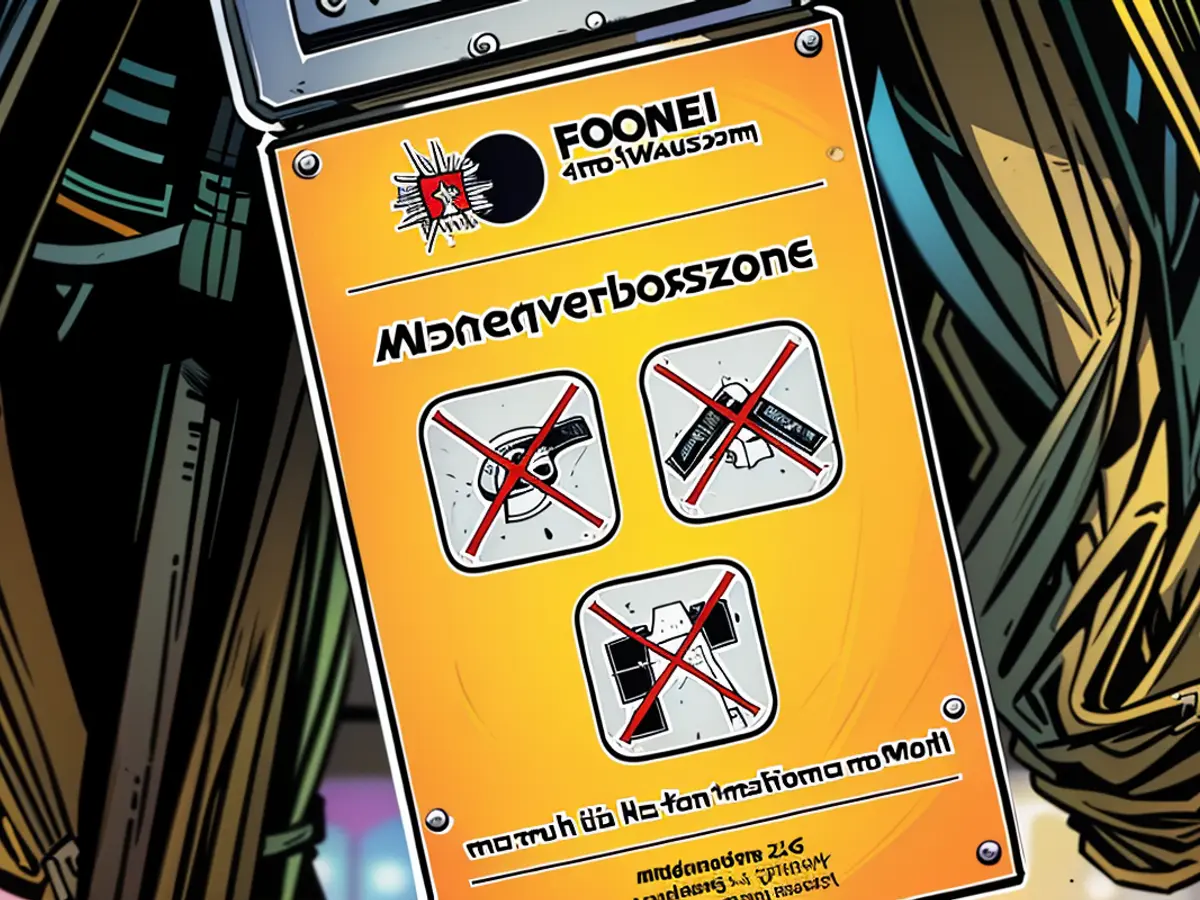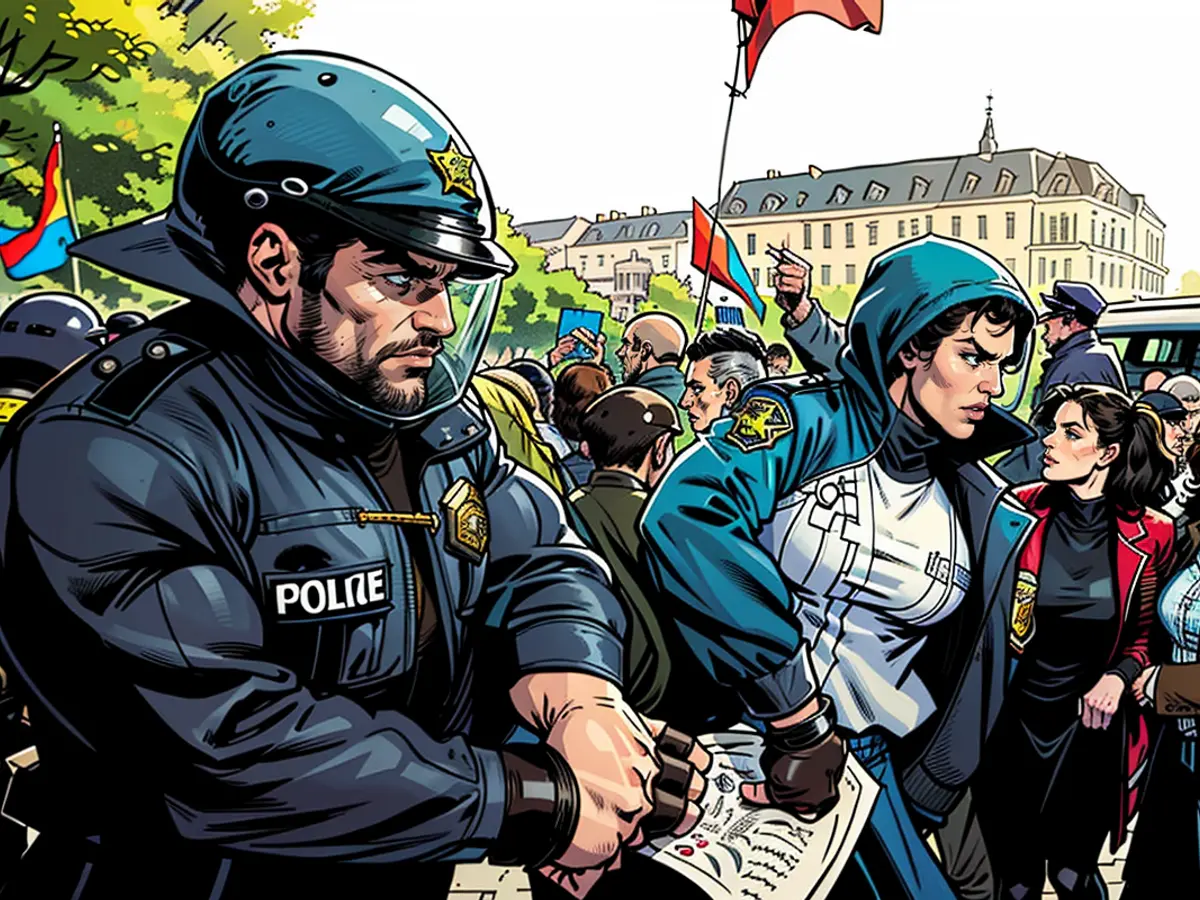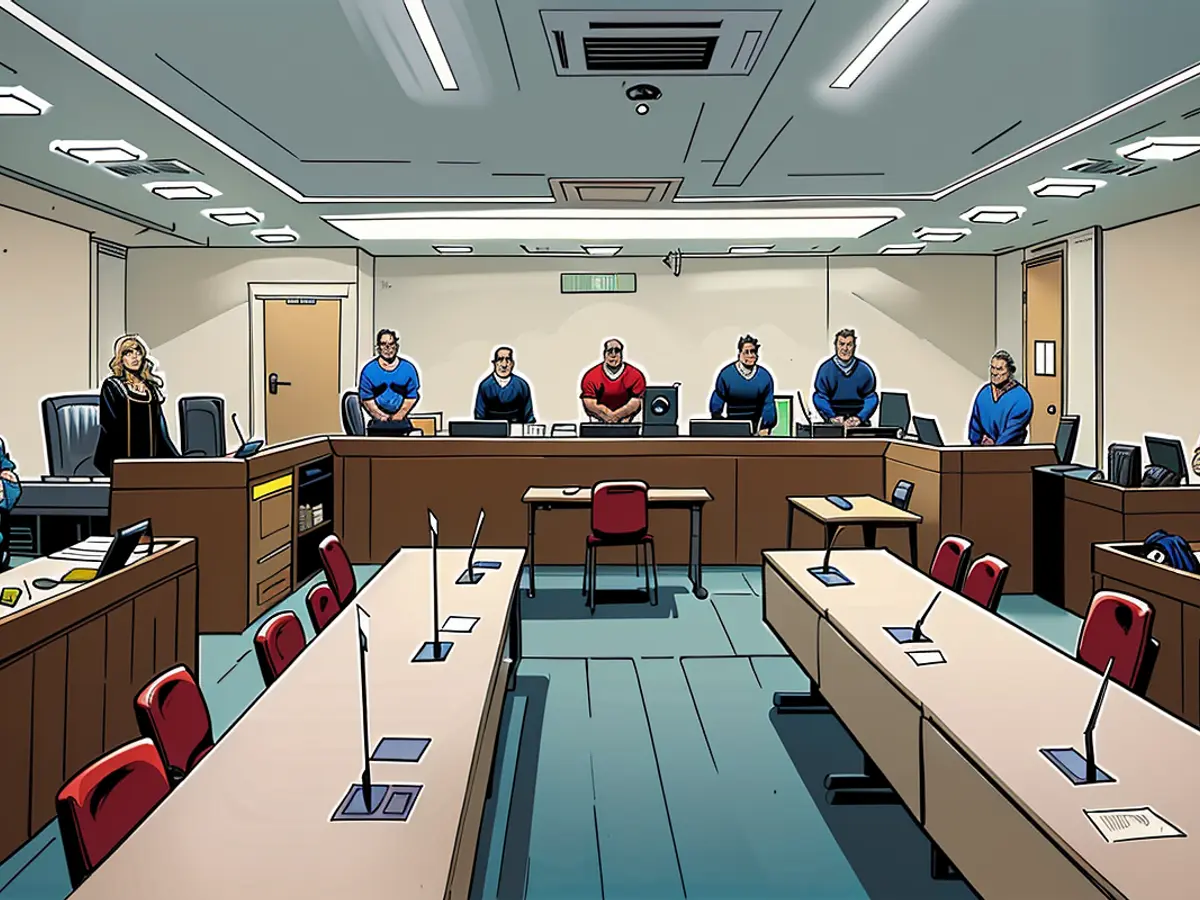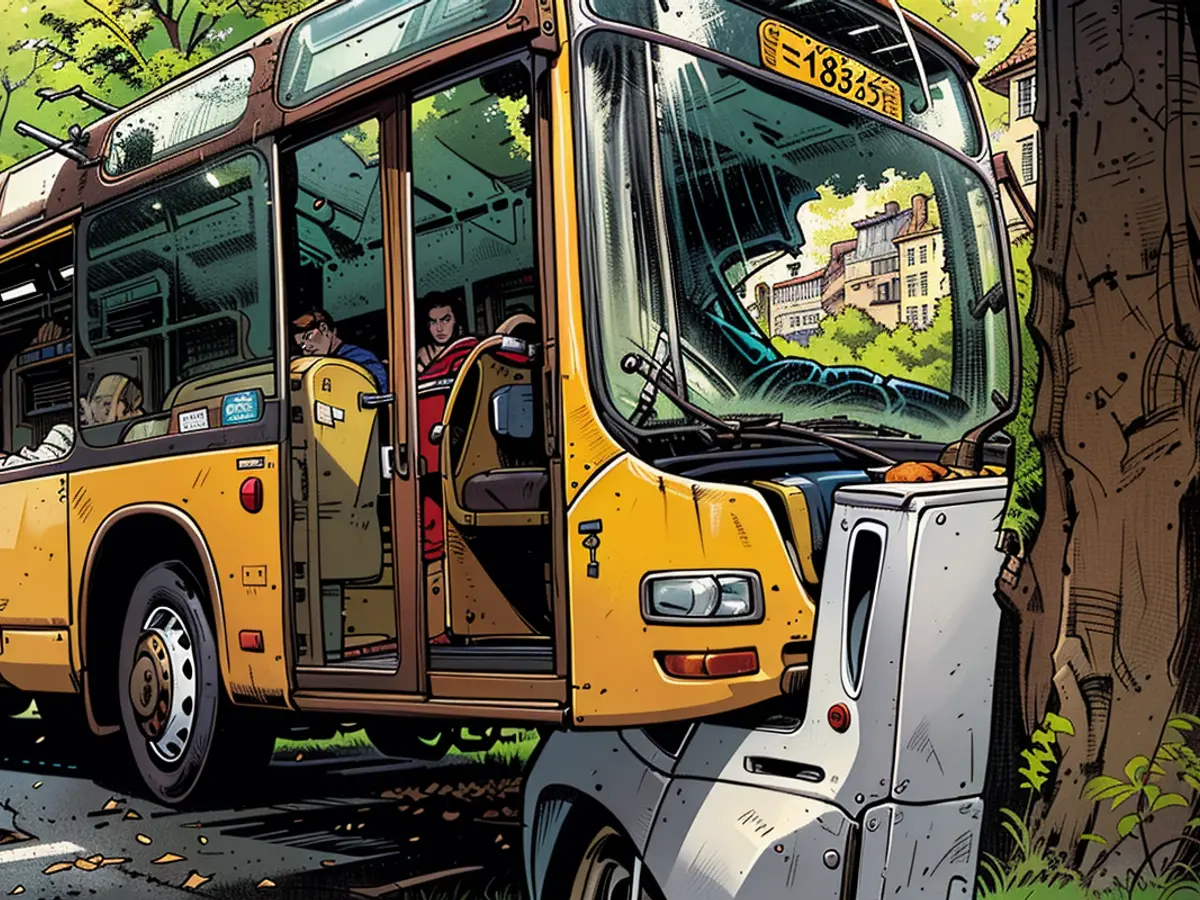¿El valor de las zonas libres de armas en la práctica?
Tras el ataque con cuchillo en Solingen, los políticos abogan de nuevo por más zonas libres de armas. Sin embargo, la efectividad de estas zonas es un tema de controversia. Mientras que Renania del Norte-Westfalia aboga por su implementación, Leipzig está revocando las regulaciones. Los residentes pueden enfrentar desventajas en algunos casos.
El trágico ataque con cuchillo en Solingen reavivó el debate sobre las zonas libres de armas. Un hombre armado con un cuchillo apuñaló indiscriminadamente a visitantes de un festival, lo que resultó en tres fallecidos. Posteriormente, el Vicecanciller Robert Habeck, entre otros, pidió más zonas libres de armas, stating, "Nadie necesita cuchillos o armas afiladas en espacios públicos en Alemania."
Después del ataque con cuchillo en Mannheim en mayo, donde un agresor mató a un oficial de policía, se intensificó la demanda de zonas libres de armas. El Canciller Olaf Scholz lo describió como una respuesta del Estado de derecho. Recientemente, la Ministra del Interior Federal Nancy Faeser presionó a los municipios para utilizar esta herramienta con más vigor. Sin embargo, la eficacia de que las ciudades se vuelvan más seguras mediante este método es incierta, según las evaluaciones criminológicas.
Las zonas libres de armas están reguladas por la Ley de Armas y las Leyes de Policía. Amplían el alcance de la Ley de Armas, prohibiendo ciertas armas o reduciendo la longitud permitida de los cuchillos. Los detalles varían entre los lugares, con incluso botellas de vidrio prohibidas en la Reeperbahn de Hamburgo. Las zonas pueden ser temporales, como durante grandes eventos, o permanentes para ciertas calles, plazas o distritos. Sin embargo, hay excepciones, como la ciudad antigua de Düsseldorf, que es una zona libre de armas solo los fines de semana y días festivos.
"Un letrero es de poca utilidad"
El ataque con cuchillo en Mannheim tuvo lugar dentro de una zona libre de armas, pero la zona solo se aplica durante las horas de la tarde y noche y los fines de semana. El incidente ocurrió durante el día. Even determined attackers intent on violence would likely not be deterred by a weapons ban, as expert Rettenberger points out.
After the Solingen attack, the German Criminal Police Association also called for a nuanced discussion on combating knife violence. "The perpetrator would not have been deterred by knife-free zones or a general knife ban. He seemed well-aware of his actions," Nordrhein-Westfalen BDK chief Dirk Peglow stated to the editorial network Germany.
Initially, weapon-free zones grant police more authority. They enable officers to conduct random checks in these areas, imposing fines up to 10,000 euros for violations. Consequently, police presence is required for a weapon-free zone to be effective.
The first weapon-free zone was established in Hamburg in 2007, and several major cities followed suit. North Rhine-Westphalia has utilized this instrument since 2021, with a total of four weapon-free zones implemented in Düsseldorf and Cologne. After one year, Interior Minister Herbert Reul reported: "The arsenal found during 17,191 controls, which includes 349 weapons and knives, and the 744 individuals apprehended, provides a compelling answer as to whether weapon-free zones contribute to inner-city safety."
In Cologne-Mülheim, a permanent weapon-free zone was introduced in June. "I do not believe that a weapon-free zone is the panacea for all situations. It's a piece of the puzzle," Reul commented. "However, every knife removed from circulation cannot harm anyone - and that's beneficial." The police in other federal states, such as Bremen, Lower Saxony, Hesse, and Baden-Württemberg, reported positive experiences with the instrument.
Berlin mantiene las zonas abiertas
En Berlin, sin embargo, es difícil identificar áreas donde la implementación de una zona libre de armas sería significativa, según la presidenta de la policía Barbara Slowik. Ella notó que la violencia con cuchillos está distribuida uniformemente en el área urbana. "Mantenemos las zonas libres de armas abiertas, pero no se han hecho planes específicos hasta ahora," Slowik dijo.
El estudio más completo de una zona libre de armas proviene de Leipzig. Desde 2018, se prohíben las armas, cuchillos, spray de pimienta y otros objetos peligrosos en el área alrededor de la calle Eisenbahnstraße. Esto se intended to increase security in the area, which is considered a hotspot de crime in Leipzig.
According to the Leipzig study presented in 2021, the weapon-free zone has contributed to a decrease in publicly executed armed attacks. However, crime and its causes have not been sustainable. The rate of offenses has remained consistent. Even from the Leipzig police directorate, it is now stated: "The weapon-free zone is not necessary from our point of view." The number of disputes has not changed. The city council has decided to abandon the weapon-free zone and replace it with a permanent police post.
Riesgo de estigmatización
Rettenberger highlights the dual impact of weapon-free zones, both criminologically and subjectively. He mentions that these zones can enhance the residents' feeling of safety, which is a positive outcome. However, the opposite can also occur. These zones might stigmatize certain residential areas, as suggested by Rettenberger. In fact, in a Leipzig study, people reported a decline in the reputation of their living environment due to these zones.
The constant fear of being checked at any moment negatively affects the quality of life, according to Rettenberger. This is particularly impactful on young men who are more prone to crime, as both perpetrators and victims. Moreover, there's the risk of racial profiling, with certain migrant groups being targeted for searches based on their appearance.
Ultimately, it boils down to a balance between security and freedom, Rettenberger points out. No criminological measure, including weapon-free zones, comes without its downsides. There's no measure that delivers solely positive effects without any negative impact. Rettenberger champions for a thoughtful, inclusive dialogue involving the police, residents, and local politics. This process requires patience and understanding in the debate on implementing gun-free zones.
Tras el ataque con cuchillo en Mannheim, que ocurrió fuera de las horas del área libre de armas designada, se destacó la necesidad de medidas más efectivas contra la violencia con cuchillos. A pesar de que Mannheim es una ciudad que ha implementado áreas libres de armas, la tragedia subrayó la necesidad de más debates y mejoras potenciales para mejorar la seguridad pública.
Dado que Mannheim no es la única ciudad en Alemania afectada por ataques con cuchillos, se sugirió que Leipzig, conocida por su área libre de armas alrededor de Eisenbahnstraße, podría servir como ejemplo para que otras ciudades analicen y potencialmente repliquen sus resultados. Esto permitiría una comprensión más completa de los pros y contras de las áreas libres de armas en el abordaje de la violencia con cuchillos.








